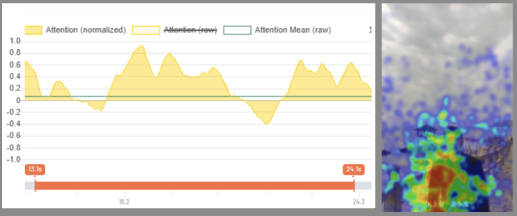UTM Comments is a partnership between Macau News Agency and Macao University of Tourism
By Belina da Graça Lei and Mars Han Wenze
Neuromarketing is to apply neuroscience principle into marketing practices. This technique uses advanced tools to tracked people’s brain activities to investigate consumers’ emotions, physical reactions, and preference to products, brands, and marketing practices.
Some of the tools used in neuromarketing include:
1. Eye-tracking (E.T.)
This tool tracks where people look and how their eyes move when they see something.
2. Electroencephalography (E.E.G.)
This tool measures the brain’s electrical activity to see how the brain responds to different marketing stimuli.
3. Functional Magnetic Resonance Imaging (fMRI)
This tool uses magnetic fields to see which parts of the brain are active when people are exposed to marketing materials.
4. Facial Expression Analysis (F.E.A.)
This tool analyzes people’s facial expressions to understand their emotional reactions to marketing.
5. Electrodermal activity (E.D.A.)
This tool measures changes in the skin’s electrical properties, which can indicate emotional responses.
Neuromarketing has experienced significant advancements over the past two decades, transforming marketing strategies since the 1990s. The technological advancements have immense power, reshaping how we interact with customers and understand their needs.

Belina Lei is a lecturer at UTM 
Mars Han Wenze graduated from Bachelor of Science in Tourism Business Management from UTM in 2024
Neuromarketing not only helps traditional marketing by creating, directing, and maintaining customer participation but also shapes brands, brand conversations, brand experiences, brand advocacy, and brand communities. Several companies, like Microsoft, Google, Coca-Cola, and Amazon, have used these neuromarketing tools in their sales, marketing, and research. Transformation in marketing research includes various aspects such as digital marketing, mobile marketing, social media marketing, customer engagement, customer journey, business-to-business (B2B), business-to-customer (B2C), direct-to-customer (DTC), big data, artificial intelligence (AI), new marketing analytics, social pricing, online pricing, and more.

In a recently research by UTM scholars, eye-tracking experiments were conducted on how short videos attract viewers’ attention. Short video platforms, such as Douyin, has witnessed a surge in users and marketing applications in recent years. Experiment participants were presented with various short videos. When they were watching the videos, their eyes movements and emotional responses were tracked, recorded and analysed. The results show that characters’ appearance, special editing effects, music background, scene shots transitions, will be helpful to attract the audience’s attention. Short videos with the above features will also evoke emotions and extent the audience gaze time, and hence stimulating viewers’ purchase intention and willingness share to others.

While conventional marketing practices rely mostly on self-reported data, such as survey and interviews, neuromarketing techniques enable marketers to obtain deeper and more objective insights into the subconscious aspects of consumer’s preference and decision-making process. These insights provide valuable information for marketers to develop better and more effective marketing strategies to access their target customers.



















